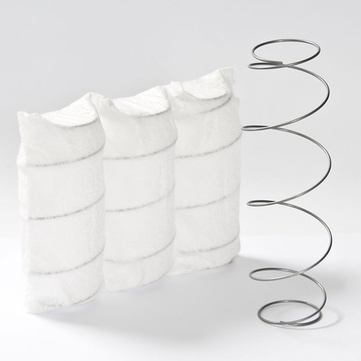Non-woven fabrics break through the traditional textile principle, and have the characteristics of short process flow, fast production speed, high output, low cost, wide application, and many sources of raw materials. It is a new generation of environmentally friendly materials. Combustion-supporting, non-toxic and non-irritating, rich in color and so on.
According to the production process is divided into:
1. Spunlace non-woven fabric: The spunlace process is to spray high-pressure fine water flow onto one or more layers of fiber webs, so that the fibers are entangled with each other, so that the fiber web can be reinforced and have a certain strength.
2. Heat-bonded non-woven fabrics: Heat-bonded non-woven fabrics refer to adding fibrous or powdery hot-melt bonding reinforcement materials to the fiber web, and the fiber web is then heated, melted, cooled, and reinforced into cloth.
3. Pulp air-laid non-woven fabrics: Air-laid non-woven fabrics can also be called dust-free paper and dry-laid non-woven fabrics. It uses the air-laid technology to open the wood pulp fiberboard into a single fiber state, and then uses the air-laid method to condense the fibers on the web-forming curtain, and the fiber web is reinforced into a cloth.
4. Wet-laid non-woven fabric: Wet-laid non-woven fabric is to open the fiber raw materials placed in the water medium into single fibers, and at the same time mix different fiber raw materials to make fiber suspension pulp, and the suspension pulp is transported to the web forming mechanism. Fibers are formed into a web in the wet state and then consolidated into a cloth.
5. Melt-blown non-woven fabrics: The process of melt-blown non-woven fabrics: polymer feeding—melt extrusion—fiber formation—fiber cooling—web formation—reinforcement into cloth.
6. Acupuncture non-woven fabrics: Acupuncture non-woven fabrics are a kind of dry non-woven fabrics. Acupuncture non-woven fabrics use the puncture effect of puncturing needles to reinforce the fluffy fiber web into cloth.
7. Stitch-bonded non-woven fabrics: Stitch-bonded non-woven fabrics are a kind of dry-laid non-woven fabrics. metal foil, etc.) or their combination to be reinforced to make a non-woven fabric.
8. Hydrophilic non-woven fabrics: mainly used in the production of medical and sanitary materials to achieve better hand feel and not scratch the skin. Like sanitary napkins and sanitary pads, they use the hydrophilic function of hydrophilic non-woven fabrics.
9. Spunbond non-woven fabric: Spunbond non-woven fabric is after the polymer has been extruded and stretched to form continuous filaments, the filaments are laid into a web, and the web is then self-bonded, thermally bonded, chemically bonded Bonding or mechanical reinforcement methods that turn the web into a nonwoven.
Our company mainly produces spunbond non-woven fabrics.
Written by -Amber
Post time: Aug-26-2022








